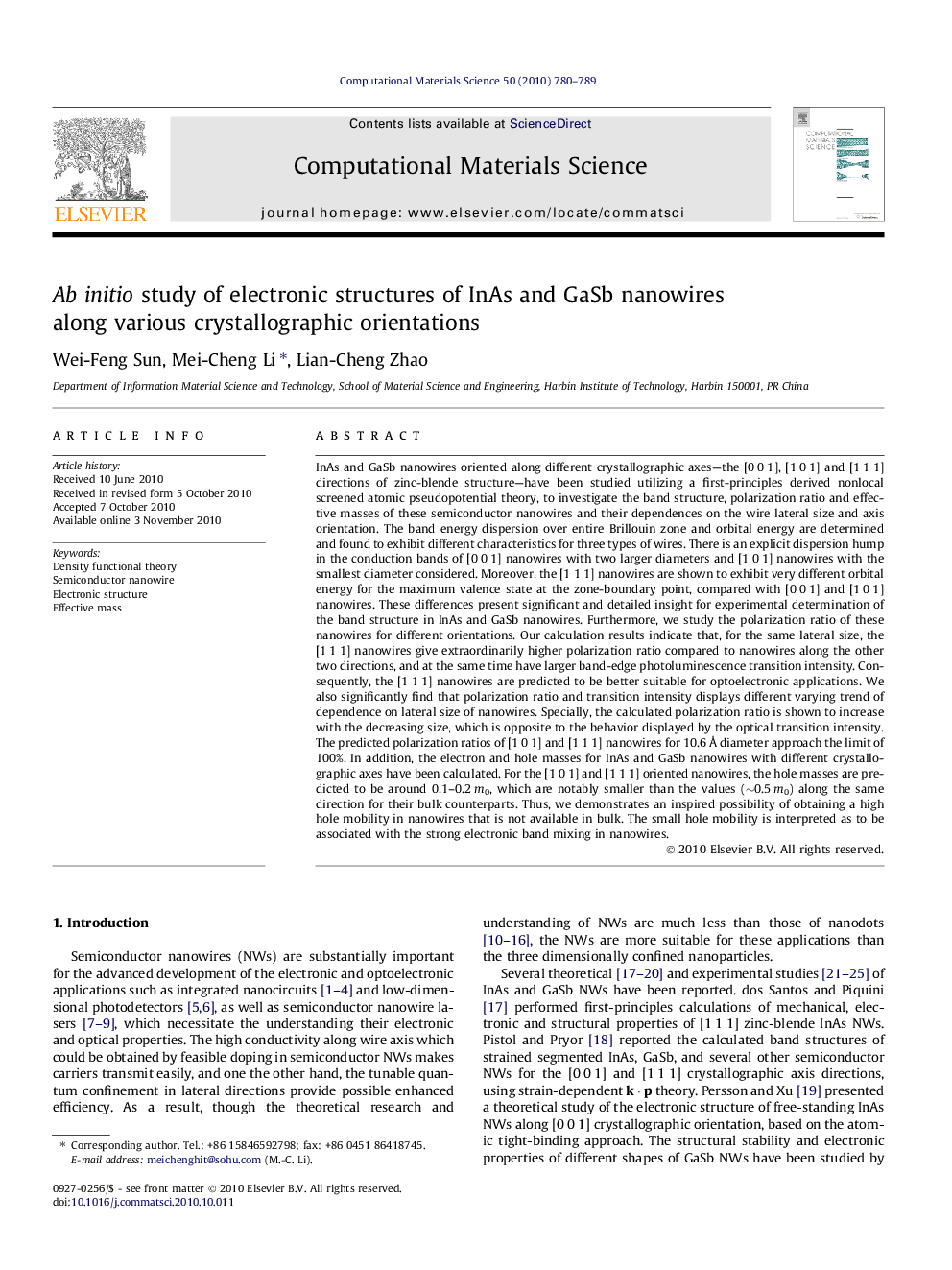| Article ID | Journal | Published Year | Pages | File Type |
|---|---|---|---|---|
| 1562873 | Computational Materials Science | 2010 | 10 Pages |
Abstract
⺠For all three types of wires studied, the calculated band structures exhibit significantly dependency of the orbital energies at zone-boundary and energy dispersions of higher valence bands on the crystallographic axis orientation. ⺠The fitting parameter n exponent is revealed to be universally independent of the nanowire orientation, which are considerably different from those for InAs and GaSb dots, demonstrating the dimensional dependency of n parameter. ⺠The predicted transition matrix element and polarization ratio decreases and increases respectively with the decreasing wire diameter. Furthermore, the magnitude of transition matrix declines most intensively and slightest for the [0 0 1] and [1 1 1] NWs respectively as wire diameter becomes smaller, indicating the best compatibility of the [1 1 1] axis orientation for optoelectronic application by small size NWs. ⺠The polarization ratio is found extremely high as â¼85% for both the [1 0 1] and [1 1 1] NWs, varying with wire diameter, revealing another possible mechanism rather than the dielectric confinement model to explain the highly polarized photoluminescence observed in experiments. ⺠The obtained electron effective masses depend substantially on the wire diameter. On the other hand, the calculated hole masses only for [0 0 1] NWs depends significantly on the wire size, whereas the hole masses for the [1 0 1] and [1 1 1] NWs are found to have little size dependency.
Related Topics
Physical Sciences and Engineering
Engineering
Computational Mechanics
Authors
Wei-Feng Sun, Mei-Cheng Li, Lian-Cheng Zhao,
